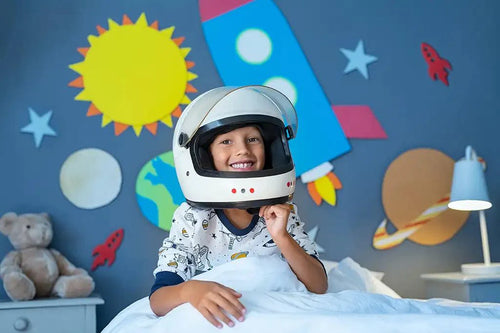Space Day Activities

May 4th is National Space Day. This national holiday is dedicated to the amazing achievements, opportunities, and benefits in the efforts of brave space explorers. National Space Day was set in place to promote the study of math, science, technology, and engineering in young students to inspire them to pursue education and careers in STEM fields. Encourage space exploration in your students with these awesome Space Day activities.
K-2
Marshmallow Constellations
Materials:
Mini Marshmallows
Toothpicks
Outlined graphics of constellations
This fun and delicious activity will get your students excited about astronomy! Assign each student their own constellation that they have to replicate with toothpicks and marshmallows. The mini marshmallows represent the stars and the toothpicks hold the marshmallows together - making the constellation’s shape!
3-5
Planet Facts
Materials:
Access to information via computers/books
Pen
Paper
Assign each student a planet or moon and every morning ask the students for a new fact on their planet/moon. Research shows that pacing and timing are particularly beneficial for long-term retention, and this activity is a great engagement activity for starting off the school day.
6-8
Constellation Poetry
Materials:
Pencil
Paper
Ask students to write and illustrate a poem featuring a constellation of their choice. Ask students to research their constellation and choose a form of poetry that would represent the constellation best (ask them to justify why for an added bit of critical thinking). For more awesome ideas for getting your students writing take a look at our blog!
9-12
The Galaxy in Your Classroom
Materials:
Distance from the sun spreadsheet
Measuring Tape
Big outdoor space (at least 33 meters long)
Pencil and Paper
Calculator
8 sports balls to represent the planets (optional)
The objective of this activity is to create a scale replica of our Solar System. First, students convert the distance between the planets and the Sun from miles to feet and inches. Once they have accurately created their scale, take everyone outside and designate the Sun (either a student or a ball). Then students will measure the distance to Mercury and continue to build the Solar System.
These are great ways to get your students thinking about astronomy and potential jobs. Data analysts, telescope technicians, aerospace consultants, and jobs at NASA are amazing fields for your students to investigate. It’s never too early to start your students thinking about STEM fields with fun, hands-on activities and experiments.
CE Credits Online has been providing online professional development courses to teachers in NYC, LAUSD, and across the country for almost 20 years.